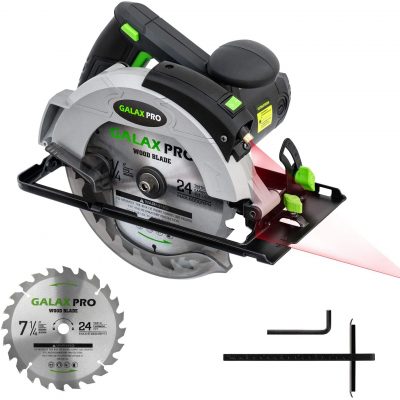
How to Change a Circular Saw Blade ?
A circular saw is a powerful tool that definitely comes in handy when you need to cut a material using a rotary motion. It can either be equipped with a blade or an abrasive disc and can either be handheld or mounted on a table.
It’s a carpenters and hobbyists assistant and is quite useful when making a variety of cuts for projects. Cabinetmakers often utilize circular saws too. As always, knowing how to take care and use your tools goes a long way.
So let’s talk about one important aspect of using this type of power saw. We’re talking about how to change a circular saw blade properly and safely. Let’s get into the nitty-gritty details.
When is it time to change the blade of your circular saw?
Knowing when to change the blade of your circular saw is key not only for safety purposes but also for its efficiency and effectiveness when you use it and also to save on some cash. You don’t want to discard a blade that is still in good condition as that would be a complete waste.
One major factor that affects how often should you change the blade of your circular saw is how much you utilize it for projects. Naturally, if you don’t use it regularly then you don’t need to change it as often as well. But if you are a professional at your trade then you’d expect to change it probably twice a year. We will learn more about cleaning, sharpening, or replacing your circular saw blades in a later section.
How to change the blade of your circular saw?
Here are the steps:
Safety first! Make sure to unplug the circular saw from its power source whether by unplugging its electrical cord from your wall outlet or making sure to remove its batteries.
Work on engaging the locking mechanism. Press down on your usually red button circular saw’s arbor-lock button and then rotate the blade. This process makes sure that your blade won’t run freely. The restrictions make sure that you won’t cut yourself in the replacement process.
Then, remove the arbor nut by lifting the safety guard. This is the nut that holds your circular saw’s blade. It’s usually a plastic sheath that covers the blade when not in use. The blade will then be exposed as you lift the guard to let it slide out for the removal or replacement process. A socket wrench should come handy. Make sure to lift out the nut and then set it aside.
The next thing you got to do is to remove your old blade by retracting the upper blade guard. Then, it’s time to put in the new blade.
Slide in your new blade into the arbor and take note to ensure that the teeth face the direction of the rotation. Refer to the arrow of theblade guard if you’re not quite sure. The teeth should then angle downwards so that when it cuts the blade spins in a clockwise direction.
The side casing of the saw should also be an indicator as to where the teeth should be facing.
Make sure to lock the new blade of your circular saw in position by changing the retaining bolt. Go grab your socket wrench again and then tighten the arbor of your circular saw nut properly. Don’t over tighten the arbor nut as that would make it difficult to loosen up in the future when it comes to replacing the blade again in the future.
Once your saw blade is in place and tight, you need to slide the safety guard back in place. Then release the safety lock which is the red button so that the blade may now turn again.
For diamond shaped arbor, secure two wood blocks and then straddle the blade. Use your hammer to remove the diamond insert from its center.
So why change the blade of your circular saw?
Naturally, you need to change the blade of your circular saw when it is getting blunt. When there’s already significant wear or kerf tearout during a visual inspection, chipping, binding, excessive burning, and when your saw is already way too difficult to push through.
When the saw is underpowered then it may be time to take a look at replacing it. Also, take note that based on the material that you are about to cut certain saw blades are more appropriate than others. So that could also be an indicator that you need to replace the one that you currently have installed as well.
It is also important to take note that sometimes you may not have to replace your blade right away.
What we mean by this is that sometimes a good cleaning of the blade might help its performance. Oftentimes, you may clean the blade twice or thrice before you actually need to sharpen it. Sharpening the blade will also help tremendously but even that will have a limit.
Once the blade is beyond any sharpening as a workaround then replacement may be due.
As always, take note of necessary safety precautions. Clear your workspace and wear protective gear at all times.
Leave a Reply